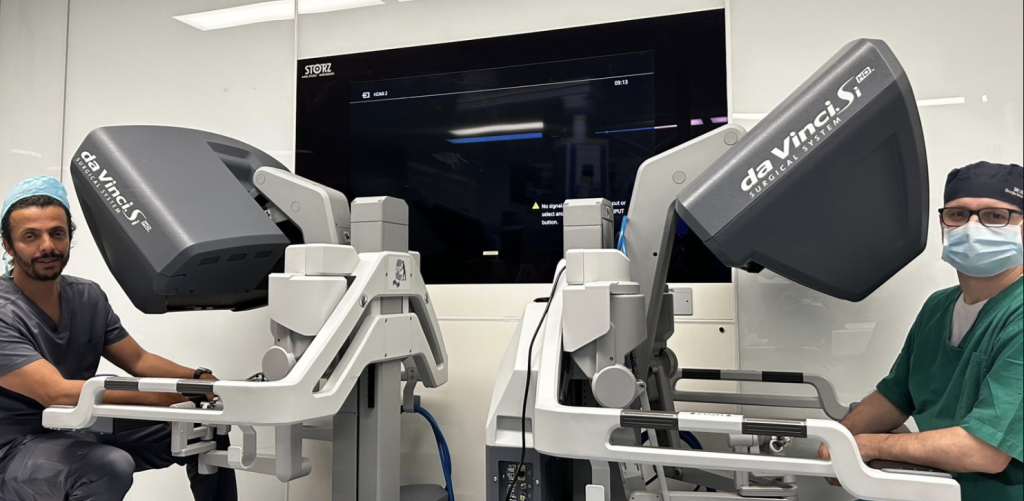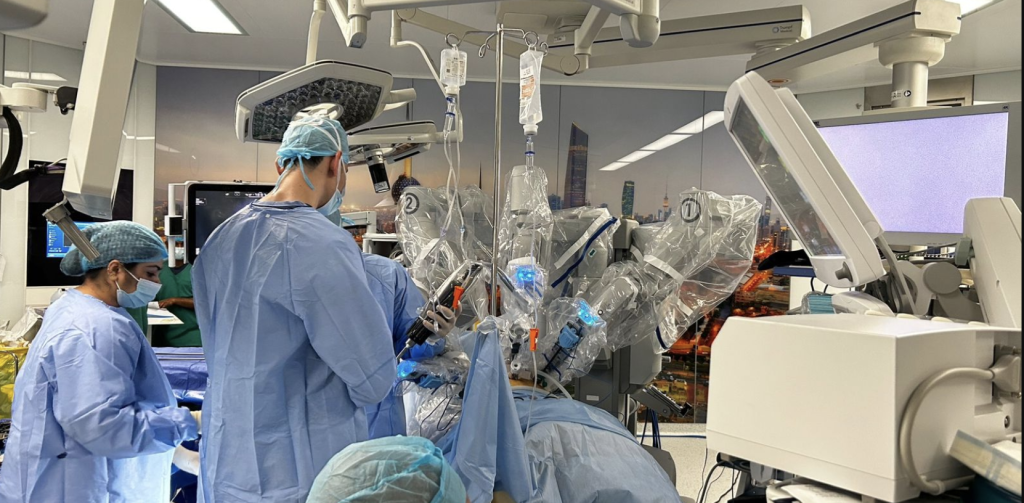São Paulo – A partnership between Brazil and Kuwait has brought significant advancements to an important medical field in the Arab country: robotic surgery. Leandro Totti Cavazzola, a 52-year-old native of Porto Alegre, professor at the Federal University of Rio Grande do Sul (UFRGS), general surgeon, and specialist in robotic surgery, has been the main driver of this partnership.
“Kuwait didn’t have any robots, and they came to learn a bit about this technology here. Brazil, which has been performing robotic surgery since 2008, ended up becoming a reference for the Arab country,” said Cavazzola.
“Between 2014 and 2015, a group of doctors from the Sheik Jaber Al-Ahmad Al-Sabah Hospital, one of the most important in the country, underwent a year of training at Scolla, which is a surgical training center in Curitiba, where I was giving a lecture on minimally invasive robotic surgery. After this first visit, we kept in touch.”

The purchase of the first Da Vinci robot, which is used in digestive and urological surgeries, took place in 2018 in Kuwait. The following year, Cavazzola was called to assist in training local doctors. The partnership has been so successful that since 2019, he has traveled to the Arab country five times.
In addition to the training, the professional, alongside local doctors, has performed complex surgeries, including abdominal wall reconstruction. “I went once in 2019, and then the pandemic hit. In 2023, after the situation improved, they called me again to train more professionals, and since then, I’ve been going there every six months.”
Last July, the doctor conducted an important training session for experienced doctors as well as for residents in robotic and minimally invasive surgery, which was unprecedent. With a date already scheduled for the beginning of next year, Cavazzola will hold a new training session, which will last approximately one week.
“After the first training in 2019, the Arab doctors established a series of metrics and began performing surgeries on their own. With excellent training, they always welcome me very warmly and learn quickly how to operate the robot.”
Robot in surgery
The very robust medical equipment occupies five to seven meters of space in an operating room and is operated by two surgeons and a technician who knows how the equipment works and can intervene if something goes wrong.

The UFRGS professor explains that compared to traditional surgeries, procedures performed with this robot can carry out more complex operations more safely, reduce hospitalization time from five days to one day, and minimize surgical complications by four to six times.
“”This happens because robot-assisted surgery doesn’t make those huge incisions and also allows the surgeon more freedom to operate on the patient,” Cavazzola adds.
In the near future, the partnership between the two countries is expected to evolve even further. “There’s a project to bring doctors from Kuwait to Brazil to train them for a period of two to three months. The goal is for them to observe 15 to 20 surgeries. For us, the great advantages of this partnership are the networking opportunities and the experiences we gain from other types of surgeries,” said the UFRGS professor.
Leandro Totti Cavazzola
With decades of experience, Cavazzola first graduated as a doctor and completed his residency at the Federal University of Rio Grande do Sul. He specialized in Digestive Wall Surgery, earned his master’s and doctoral degrees in General Surgery, and completed a postdoctoral fellowship in Minimally Invasive Surgery in the United States.
“In 2008, I met the Da Vinci robot while doing my postdoctoral fellowship. I completed my first training on the robot in 2012, and since 2013, I’ve been certified to be a tutor, which means I became qualified to teach others how to perform surgeries with robots. I was one of the first to receive this authorization from the Brazilian College of Surgeons, and to date, I have completed over 800 robotic procedures, both monitored and performed.”
Read more:
Lebanon raises donations to treat childhood cancer
Report by Rebecca Vettore, in collaboration with ANBA
Translated by Guilherme Miranda




